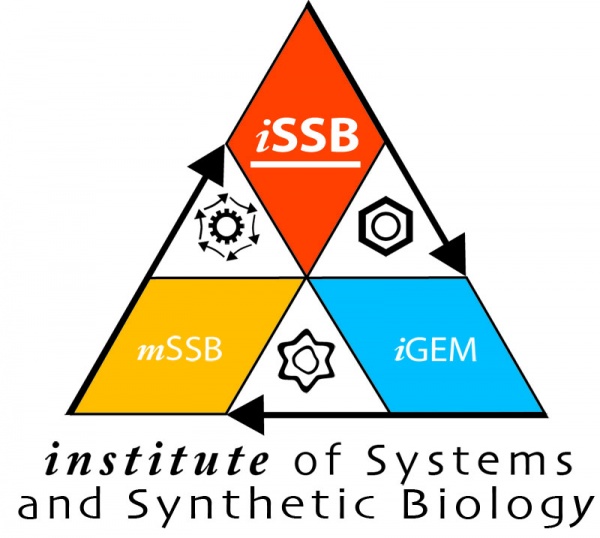Team:Evry/Pill design
From 2013.igem.org
| Line 35: | Line 35: | ||
<p> | <p> | ||
| - | We see three main challenges to construction of a device to deliver bacteria to the intestine. First, <b>the capsule must resist the low pH conditions in the stomach</b>, which are lethal to our bacteria. Second, <b>the capsule must rapidly dissolve in the duodenum</b> to deliver its payload to the distal duodenum and the proximal jejunum. Third, <b>the bacteria must have enough time to produce enterobactins to effectively uptake iron</b> before being excreted from the intestine. | + | We see three main challenges to construction of a device to deliver bacteria to the intestine. First, <b>the capsule must resist the low pH conditions in the stomach</b>, which are lethal to our bacteria. Second, <b>the capsule must rapidly dissolve in the duodenum</b> to deliver its payload to the distal duodenum and the proximal jejunum. Third, <b>the bacteria must have <a href="https://2013.igem.org/Team:Evry/Model3">enough time to produce enterobactins</a> to effectively uptake iron</b> before being excreted from the intestine. |
<br> | <br> | ||
<br> | <br> | ||
| Line 48: | Line 48: | ||
<h3>Which galenic formulation is best suited for our goals?</h3> | <h3>Which galenic formulation is best suited for our goals?</h3> | ||
| - | <p> | + | <p>pillcapsule is to determine its galenic formulation. We want a <i>per os</i> administration for our bacteria and had the choice between either a tablet or a capsule. A tablet requires dry compression of its contents, meaning the bacteria would have to be lyophilized. We decided a capsule is more suited for our purpose because it can contain a non-compressed powder and avoids lyophilization, which would result in a significant delay in metabolic activity of the bacteria after being released. |
| - | + | ||
</p> | </p> | ||
Revision as of 19:32, 28 October 2013
Capsule design

Abstract
According to our predictions, to effectively treat iron over-absorption, we needed a device to deliver our Iron Coli bacteria to the distal area of the duodenum and the proximal area of the jejunum. We thus designed and built a capsule with a methacrylic acid exterior that resists the low pH conditions in the stomach, but will dissolve at intestinal pH to release Iron Coli. The capsule interior contains colloidal silica and hydroxypropylmethylcellulose (HPMC), which ensures that the bacteria survive in the capsule and have enough time to uptake iron when released in the intestine.

First, we create a novel capsule following the actual norms from the European Pharmacopeoa concerning gastro-enteric resistant formulations.
Second, we ensure that the bacteria survive following dissolution of the capsule.
Capsule design requirements
We see three main challenges to construction of a device to deliver bacteria to the intestine. First, the capsule must resist the low pH conditions in the stomach, which are lethal to our bacteria. Second, the capsule must rapidly dissolve in the duodenum to deliver its payload to the distal duodenum and the proximal jejunum. Third, the bacteria must have enough time to produce enterobactins to effectively uptake iron before being excreted from the intestine.
Capsule design, step by step

Which galenic formulation is best suited for our goals?
pillcapsule is to determine its galenic formulation. We want a per os administration for our bacteria and had the choice between either a tablet or a capsule. A tablet requires dry compression of its contents, meaning the bacteria would have to be lyophilized. We decided a capsule is more suited for our purpose because it can contain a non-compressed powder and avoids lyophilization, which would result in a significant delay in metabolic activity of the bacteria after being released.

How to store the bacteria in the capsule?
A pharmaceutical capsule requires every component to be in powder form. We tested which formulation was able to absorb the most LB medium saturated with bacteria. In galenic research, this is called a moisture absorbent and ensures the proper chemical properties to keep our drug (here our bacteria in LB medium) viable in a dry environment. We experimented with several compositions based on maltodextrin and colloidal silica (Figures 1 and 2) and found colloidal silica interacter better with LB medium.
We produced capsules in batches of 50 (standard for one rack, Figure 3). Here we carefully mix colloidal silica with the HPMC diluent such that the entire volume of powder is equally distributed in the capsules (Figure 4).
Finally, the 50 capsules contain a total of 11 ml of colloidal silica in which 4 mL of saturated bacteria have been dissolved and 24 mL of HPMC. The last step is sealing the capsules (Figures 5 and 6).

How to overcome the acidity of the stomach?

How to deliver the bacteria in the intestine?
The gelatine-based composition of the capsule dissolves at neutral pH to deliver its payload to the duodenum. Right after the dissolution of the gelatine capsule, the HPMC swells to form a viscuous obstruction. This process creates an environment in the jejunum where bacteria can statically proliferate. Thus, HPMC, beside its properties as a diluent, is also called a bio-adhesive for its ability to stick to the membranes of the intestins and form an obstruction.

How to prove the real efficiency of our capsule?
As a proof of concept, we fulfilled the two basic requirements of the European Pharmacopeia to make a gastro-enteric resistant capsule which are as follows:
- No dissolution of the capsule after 2 hours of exposure to gastric acid (solution at pH = 2)
- Dissolution of the capsule within 1 hour of exposure to water (Phosphate Buffer solution, pH = 7) right afterwards
The dissolution machine lifts raises and lowers a basket into a 800mL beaker (Figure 9). In each experiment, we were able to test 6 capsules spread into 6 separate columns (Figure 10). These columns can be sealed on top with a lid to increase the dissolution and mimic different segments of the intestines.
We observed that the capsules maintained their integrity after one hour of exposure to gastric acidity (Figure 11) and didn't release their contents into solution (Figure 12).
We continued the experiment for an additional hour to confirm that even after two hours of exposure to a pH=2 solutes, the capsules were still not dissolved (Figure 13) and hadn't released their contents (Figure 14).
The acid solution was clear after removing the capsules (Figure 15), showing that the first condition of the European Pharmacopeoa to create a gastro-enteric resistant capsule has been fullfilled.
The capsules were fully intact when they were transferred to a PBS (Figure 16) and none of the contents were immediately released (Figure 17).
The capsules began to dissolve after 15 minutes in PBS buffer (Figure 18) and the dye solution began to be released (Figure 19).
The capsules continue to dissolve after 30 minutes in PBS buffer (Figure 20) and released their contents (Figure 21).
The capsules continue to dissolve after 40 minutes in PBS buffer (Figure 22) and release their contents (Figure 23).
The capsules continue to dissolve after 50 minutes in PBS buffer (Figure 24) and release their contents (Figure 25).
The capsules were fully dissolved after 60 minutes in PBS (Figure 26) and had released their contents into the PBS solution (Figure 27).
Conclusion and perspectives
Our polymeric capsule successfully bypassed stomach acidity (pH=2) and rapidly dissolved to release its contents at neutral pH as in the duodenum and jejunum. The capsule thus fulfills the requirements of the European Pharmacopeia.
The next step for the capsule project is to mix the colloidal silica and hydroxypropylmethylcellulose with a concentrated culture of our siderophore-overexpressing Iron Coli. After encapsulating them in gelatine and methacrylic acid, we must establish that our bacteria can be released from the capsule and survive. If these tests are conclusive it could be possible to test the capsule in hemochromatosis mice.
La capsule a pour but de répondre aux pb soulevés apr la strategie initiale du flush (cf model 1). Du cote HP, elle permet de continuer à utiliser cette stratégie qui est plus sure pour els aptients (cf arbre de consequence).
Mettre un lien vers l'ANSM et model économique.
ETBALIR UN COUT POUR UNE GELULE
 "
"








































